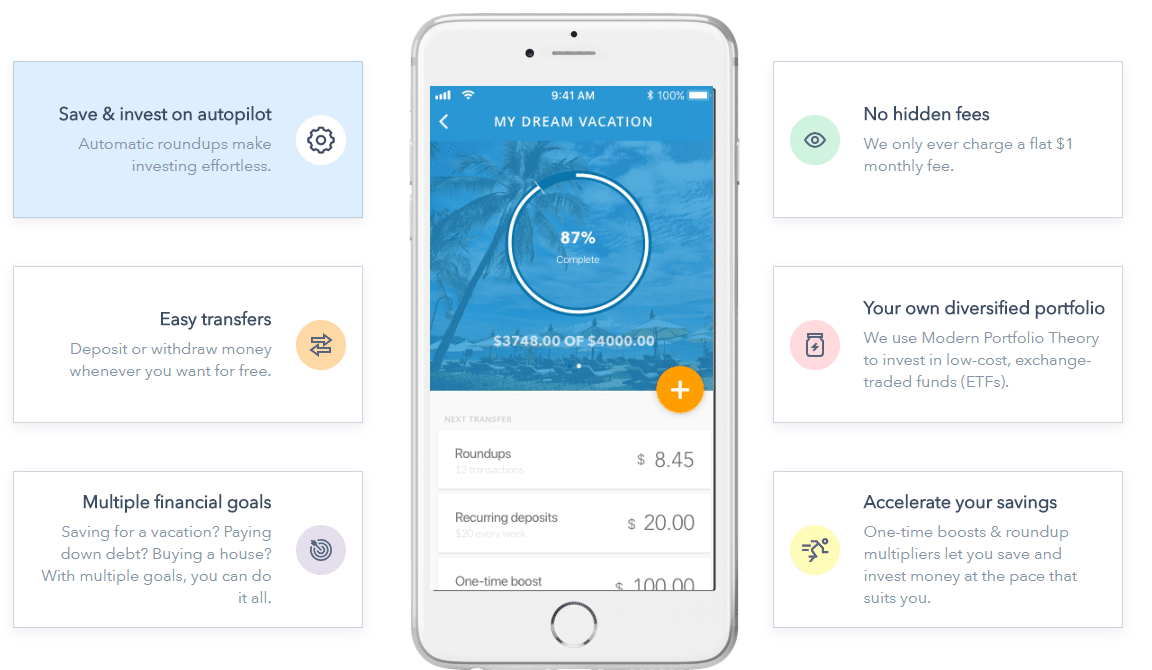If you’re a Canadian resident seeking a retirement savings plan similar to the popular Roth Individual Retirement Account (Roth IRA) in the United States, the Tax-Free Savings Account (TFSA) might be just what you need.
While the Roth IRA serves as a special savings account allowing Americans to contribute after-tax dollars annually and make tax-free withdrawals in the future, the Roth IRA equivalent in Canada, the TFSA, offers similar benefits with minor differences.
In this blog post, we’ll delve into the advantages and features of both the Roth IRA and the TFSA, highlighting their effectiveness as tools for retirement savings and estate planning.
Additionally, we’ll share valuable tips and insights on managing these accounts seamlessly across borders, ensuring the security and growth of your financial investments.
What is a Roth IRA Account?
Can Canadians Have Roth IRA Accounts?
The key requirement for non-residents to open a Roth IRA is US-sourced income subject to US taxation. Your income must originate from the US to open and contribute to a Roth IRA account. Therefore, if you’re residing in Canada without any US earnings, contributing to a Roth IRA may not be feasible.
However, if you had a Roth IRA during your time in the US, you can retain it and continue enjoying its remarkable tax-free benefits. This also applies to non-residents who are working temporarily in the US, such as individuals on a work visa.
There is an alternative account in Canada that is comparable to the Roth IRA account. It offers fairly similar features and tax advantages.
What is the Roth IRA Equivalent In Canada?
The TFSA (Tax-Free Savings Account) is the Roth IRA equivalent in Canada. The TFSA is a registered account specifically designed for Canadian residents and offers a tax-free environment for growing your investments.
It provides Canadians with a tax-efficient way to save and invest, allowing them to grow their wealth over time while enjoying the flexibility of tax-free withdrawals. It was introduced to help Canadians save for various financial goals, such as retirement, purchasing a home, or funding education.
The unique aspect of a TFSA is that any investment income, including capital gains, dividends, and interest earned within the account, is tax-free. This means that individuals do not have to pay taxes on the growth or withdrawals made from the TFSA.
The contribution room for a TFSA is determined by the government and accumulates each year starting from the account’s inception in 2009. The specific contribution limit is announced annually, and any unused contribution room can be carried forward to future years. It’s important to note that contributions made to a TFSA do not provide any tax deductions or credits, unlike contributions to Registered Retirement Savings Plans (RRSPs).
One of the key advantages of a TFSA is the flexibility it offers. Individuals can withdraw funds from their TFSA anytime without tax penalties. Additionally, the withdrawn amount is added back to the contribution room in the following calendar year, allowing for future contributions.
Several factors come into play when considering the amount you can contribute to a TFSA. These include the annual dollar limit, any unused contribution room carried forward from previous years, and any withdrawals or re-contributions made in the past.
It’s worth mentioning that you can withdraw money from your TFSA at any time without incurring tax penalties. The withdrawn amount is then added back to your contribution room, but remember that you’ll have to wait until the following calendar year to re-contribute.
One crucial aspect to keep in mind is avoiding over-contributing to your TFSA. The Canadian Revenue Agency imposes a 1% per month penalty on over-contributed amounts, so it’s essential to be diligent and stay within the prescribed limits.
RELATED: Can You Have More Than One TFSA in 2024? Is It Worth it
Roth IRA vs TFSA: Similarities and Differences Between a Roth IRA and TFSA
The Roth IRA and the TFSA are government plans offering substantial tax savings and encouraging investment. Both the Roth IRA and the TFSA are tax-exempt accounts, which can result in significant long-term tax savings. By taking advantage of these accounts, investors can shelter gains from taxes and grow their wealth.
Both accounts are not identical, but they share some similarities, such as:
- Similar annual contribution room
- Contributions to both accounts are not tax-deductible
- Tax-free withdrawals as long as specific criteria are met
- Both accounts can hold a wide range of investments, including cash, stocks, bonds, and funds
However, there are notable differences between Roth IRAs and TFSAs:
- Contribution Room: TFSA allows for the carry-forward of unused contribution rooms, while Roth IRA does not have this provision.
- Eligible Contributions: TFSA accepts any type of savings, whereas Roth IRA only allows contributions from earned income.
- Income Restrictions: Roth IRA may disqualify contributions based on high income, whereas the TFSA is unaffected by income level.
- Contribution Room Increase: Roth IRA offers increased contribution room for individuals aged 50 and above, while TFSAs do not have such provisions.
- Withdrawal Flexibility: TFSAs provide more flexibility in withdrawing funds, whereas Roth IRAs have specific criteria that must be met for withdrawals.
This table shows the difference between the Roth IRA and the TFSA accounts.
Features | Roth IRA Account | TFSA Account |
Unused Contribution Room | Unused contribution rooms are not carried forward | Unused contribution rooms are carried forward |
Income Restrictions | High income disqualifies contributions | Income level doesn’t affect contributions |
Eligible Contributions | Only earned income can be contributed | Any income or savings can be contributed |
Contribution Room Increase | Contribution room increases for individuals above 50 | The contribution room doesn’t increase for individuals |
Withdrawal Flexibility | Certain conditions must be met for withdrawals | Funds can be withdrawn anytime |
Can I Convert a Roth IRA Account into a TFSA?
If you are retired and planning to move to Canada, you must note that you cannot transfer your Roth IRA directly to a Tax-Free Savings Account (TFSA). This is because the Canadian and US governments do not recognise these plans as equivalent.
However, you can open a TFSA account once you become a Canadian resident. But if you are considered a US person, such as a green card holder or US citizen, a TFSA may not be the most suitable option.
The Internal Revenue Service (IRS) does not treat TFSA accounts like the Canadian government for tax purposes. So, it is crucial to be cautious about the tax consequences on the US side.
Moving between the two countries requires thorough research on tax regulations. Mistakes made with TFSA accounts or Roth IRAs can result in significant taxation issues in Canada and/or the US. It is advisable to consult with a cross-border accountant before opening a TFSA account to understand the potential tax implications fully.
If you have previously lived in Canada and want to determine the contribution room available in your TFSA, you can access your MyCRA account on the Contributions – Canada.ca website.
Cross-Border Wealth Management: How To Manage Your Roth IRA and TFSA
Moving from the US to Canada can present challenges when it comes to managing your investment accounts. It’s important to note that your US advisor cannot continue actively managing your investments once you’re in Canada, and vice versa for your Canadian advisor if you’re in the US.
Additionally, cashing in your retirement accounts when moving between countries can lead to unexpected tax consequences, potentially disrupting your financial plan for the year.
To navigate these complexities and optimise tax benefits while effectively managing cross-border investments, consider the following strategies:
- Seek specialised cross-border expertise: Work with professionals specialising in cross-border wealth management and taxation. They can provide valuable guidance tailored to your unique situation and help you make informed decisions.
- Understand tax implications: Familiarize yourself with the tax laws in both countries to ensure compliance and identify potential tax advantages. Be aware of any reporting requirements and differences in tax treatment for various accounts and investments.
- Minimize taxable events: Avoid unnecessary taxable events by carefully planning your investment moves. Instead of closing out and cashing in retirement accounts, explore options such as rollovers or transfers that can help preserve tax advantages and maintain your long-term financial plan.
- Diversify and manage risk: Create a diversified investment portfolio that spans different asset classes and jurisdictions. This can help mitigate risks and exploit US and Canadian market opportunities.
- Monitor currency fluctuations: Keep an eye on currency exchange rates, as they can impact the value of your investments. Consider strategies to manage currency risk, such as using hedging instruments or diversifying currency exposure.
RELATED: TFSA vs RRSP: Which Is Better For You?
Other US Registered Accounts vs their Canadian Equivalents
In addition to the Roth IRA account, other US-registered accounts have Canadian equivalents that serve similar purposes providing tax advantages for savings and investments in Canada.
Individual Retirement Account (IRA) vs Registered Retirement Savings Plan (RRSP)
The Individual Retirement Account (IRA) in the US and the Registered Retirement Savings Plan (RRSP) in Canada are both widely used for retirement savings. However, there are important distinctions between them:
IRA:
- Contributions to a traditional IRA can be tax-deductible, reducing taxable income in the year of contribution.
- Investments within the IRA grow tax-deferred, meaning taxes are paid upon withdrawal, typically as ordinary income.
- The IRS sets annual contribution limits, with a maximum of $6,000 in 2021 (plus a $1,000 catch-up contribution for those 50 and older).
- Early withdrawals from a traditional IRA before age 59½ may incur a 10% penalty in addition to being taxed as income.
- Traditional IRAs can be converted to Roth IRAs, requiring taxes to be paid on the converted amount. Roth IRAs allow tax-free growth and withdrawals, subject to conditions.
RRSP:
- Contributions to an RRSP are also tax-deductible, lowering taxable income in the year of contribution.
- Like an IRA, investment growth within an RRSP is tax-deferred until withdrawal.
- RRSP contribution limits depend on a percentage of earned income, with a maximum of CAD 27,830 in 2021.
- RRSP withdrawals are generally taxable as income. However, special provisions like the Home Buyers’ Plan and Lifelong Learning Plan offer tax-deferred withdrawals for specific purposes.
- RRSPs can be converted into a Registered Retirement Income Fund (RRIF) or used to purchase an annuity to provide retirement income. Conversion options prioritize retirement income rather than tax-free growth.
401(k) vs Registered Pension Plan (RPP) or Registered Retirement Savings Plan (RRSP)
The 401(k) is an employer-sponsored retirement plan that allows employees to contribute a portion of their salary pre-tax. In Canada, RPPs and employer-sponsored RRSPs serve similar purposes, enabling employees to contribute pre-tax income toward their retirement savings. Here are the key differences between them:
401(k):
- 401(k) plans are commonly provided by US employers as a workplace retirement savings option.
- A 401(k) contribution is made with pre-tax income, reducing the employee’s taxable income for the contribution year.
- Many employers offer a matching contribution, which is a percentage of the employee’s salary, to the 401(k) based on a predetermined formula.
- The IRS sets annual contribution limits for 401(k) plans. In 2021, the maximum contribution limit is $19,500 (plus an additional $6,500 catch-up contribution for individuals aged 50 and above).
- Employees may need to meet a vesting period before they fully own the employer-matched contributions.
- Withdrawals from a 401(k) are generally taxable as ordinary income and may be subject to a 10% early withdrawal penalty if taken before age 59½, though certain exceptions apply.
RPP or RRSP:
- RPPs and employer-sponsored RRSPs are offered by Canadian employers as retirement savings options.
- Contributions to RPPs and employer-sponsored RRSPs are typically made with pre-tax income, reducing the employee’s taxable income for the contribution year.
- Employers may contribute to RPPs on employees’ behalf, similar to a 401(k) match.
- Contribution limits for RRSPs are based on a percentage of earned income, while RPP limits are determined by the plan design and regulatory guidelines.
- RPPs may have vesting requirements before employees fully own the employer contributions.
- Withdrawals from RRSPs and RPPs are generally taxable as ordinary income, though certain provisions like the Home Buyers’ Plan and Lifelong Learning Plan offer tax-deferred withdrawals for specific purposes.
Final Thoughts on Roth IRA Canada
As a Canadian, I understand the importance of maximising your retirement savings. While Roth IRAs offer attractive benefits in the US, navigating the Canadian landscape carefully is essential.
The Roth IRA equivalent retirement savings option in Canada is the Tax-Free Savings Account (TFSA), which provides similar tax advantages and savings benefits. However, it’s crucial to consult a knowledgeable advisor specialising in cross-border wealth management to ensure you make informed decisions regarding your Roth IRA in Canada.
Don’t miss out on the opportunity to optimize your retirement savings. Reach out to a cross-border financial advisor today and explore the best strategies for your Roth IRA in Canada. Start planning your financial future now!
FAQS on Roth IRA Canada
What Happens To A Canadian Inheriting A Roth IRA?
Inheriting a Roth IRA from a relative or loved one brings unique considerations and potential tax implications. When a Canadian inherits a Roth IRA, it’s crucial to approach the situation cautiously and seek guidance from a cross-border tax specialist.
Can I transfer my ROTH IRA to my RRSP?
Canadian tax provisions do not permit a Roth IRA’s direct transfer or conversion to an RRSP. However, some rules allow for a traditional IRA or 401(k) rollover into an RRSP. It’s important to explore other options and understand the benefits and limitations of each retirement savings account.
Can you open a Roth IRA in Canada?
The answer is no. Roth IRAs are specifically designed to assist Americans in retirement savings and are regulated by the Internal Revenue Service (IRS), making them inaccessible to Canadians. However, Canadians have an alternative option that resembles a Roth IRA – the Tax-Free Savings Account (TFSA).









